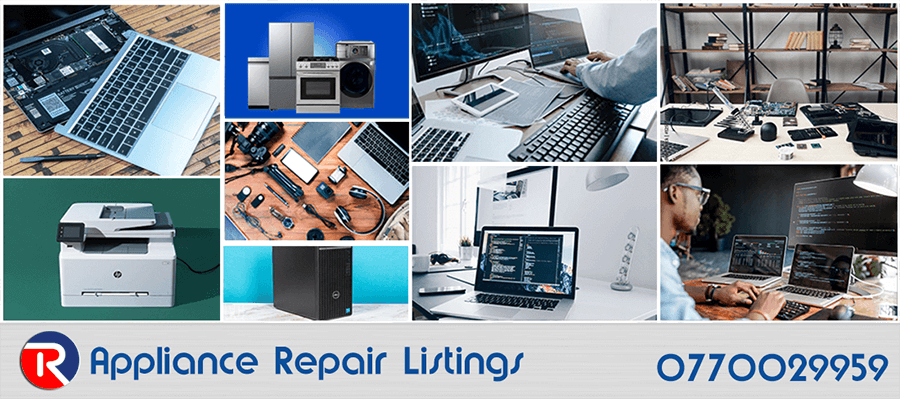
Cleaning Your Laptop’s Ports for Better Connectivity
By Repair.co.ke
Laptops are essential tools for work, study, and entertainment, but their ports—USB, HDMI, audio jacks, and charging ports—can accumulate dust, debris, and grime over time. This buildup can lead to connectivity issues, such as devices not being recognized, intermittent charging, or poor audio quality. Cleaning your laptop’s ports is a simple yet effective maintenance task that can restore functionality and extend your device’s lifespan. At Repair.co.ke, we’ve seen countless laptops revived with proper port cleaning. Here’s a comprehensive guide to safely clean your laptop’s ports for optimal connectivity.
Why Clean Your Laptop’s Ports?
Ports are exposed to the environment, making them prone to collecting dust, lint, and even sticky residues from food or drinks. These contaminants can interfere with electrical connections, causing issues like:
- USB devices not working: A dirty USB port may fail to recognize flash drives or peripherals.
- Charging problems: Debris in the charging port can prevent proper contact with the charger.
- Audio distortions: Dust in the headphone jack can lead to crackling or no sound.
- HDMI or display issues: A clogged HDMI port may cause flickering or no display output.
Regular cleaning prevents these problems and ensures your laptop remains reliable. It’s a quick task that requires minimal tools and can save you from costly repairs.
Tools You’ll Need
Before starting, gather these tools to clean your ports safely:
- Compressed air can: For blowing out dust and debris.
- Isopropyl alcohol (90% or higher): To dissolve sticky residues.
- Cotton swabs or Q-tips: For precise cleaning.
- Soft-bristled brush: A clean toothbrush or anti-static brush works well.
- Microfiber cloth: For wiping surfaces.
- Plastic spudger or toothpick: For gently removing stuck debris (avoid metal tools to prevent damage).
- Flashlight: To inspect ports closely.
Ensure your workspace is clean and well-lit, and always power off your laptop and disconnect it from any power source before cleaning.
Step-by-Step Cleaning Process
Follow these steps to clean your laptop’s ports effectively:
1. Power Down and Inspect
Turn off your laptop, unplug it, and remove any connected devices (e.g., USB drives, headphones). Use a flashlight to examine each port for visible dust, lint, or debris. Note any ports with significant buildup, as they may need extra attention.
2. Use Compressed Air
Hold the can of compressed air upright to avoid spraying liquid propellant. Aim the nozzle at the port and use short, controlled bursts to dislodge loose dust and debris. Tilt the laptop slightly to allow particles to fall out. For stubborn debris, alternate between blowing air and gently tapping the laptop’s side (over a clean surface).
3. Brush Away Remaining Debris
Use a soft-bristled brush to gently sweep out any remaining particles. Move the brush in one direction to avoid pushing debris deeper into the port. For tight spaces, a plastic spudger or toothpick can help dislodge stuck particles, but be cautious to avoid scratching the port’s contacts.
4. Clean with Isopropyl Alcohol
Dampen (don’t soak) a cotton swab with isopropyl alcohol. Gently swab the inside of the port to remove sticky residues or grime. Focus on the metal contacts, but avoid excessive pressure to prevent bending pins or damaging connectors. Use a fresh swab for each port to avoid spreading debris. Allow the alcohol to evaporate completely (about 5-10 minutes) before proceeding.
5. Final Inspection and Wipe-Down
Inspect the ports again with a flashlight to ensure they’re clean. Wipe the laptop’s exterior around the ports with a microfiber cloth lightly dampened with isopropyl alcohol to remove any residual dust. Ensure everything is dry before reconnecting devices.
Tips for Preventing Future Buildup
To keep your laptop’s ports clean and functional:
- Use port covers: Silicone or rubber plugs can protect unused ports from dust.
- Store properly: Keep your laptop in a clean, dust-free case or bag when not in use.
- Avoid eating near your laptop: Crumbs and spills can easily enter ports.
- Clean regularly: Perform a quick port cleaning every 3-6 months, depending on usage.
When to Seek Professional Help
If cleaning doesn’t resolve connectivity issues, the port may be damaged or have internal faults. For example, bent pins, loose connectors, or corrosion require professional repair. At Repair.co.ke, our technicians use specialized tools to diagnose and fix port-related problems, ensuring your laptop performs like new.
Cleaning your laptop’s ports is a straightforward task that can significantly improve connectivity and prevent frustrating issues. With the right tools and careful technique, you can maintain your laptop’s performance without professional intervention. At Repair.co.ke, we encourage regular maintenance to keep your device in top shape. Follow this guide, and your laptop’s ports will stay clean, reliable, and ready for action.